Home>Interior Design>Decorative Room Ideas: 20 Design Rules For A Dream Home


Interior Design
Decorative Room Ideas: 20 Design Rules For A Dream Home
Modified: January 5, 2024
Discover 20 interior design rules for creating the dream home of your dreams with these decorative room ideas. Create the perfect ambiance and style for your living space.
(Many of the links in this article redirect to a specific reviewed product. Your purchase of these products through affiliate links helps to generate commission for Storables.com, at no extra cost. Learn more)
Introduction
Creating a dream home is a goal that many of us aspire to achieve. The desire to have a space that is not only visually appealing but also reflects our personality and style is a common aspiration. Whether you are moving into a new home or looking to revamp your current space, the world of interior design can seem overwhelming at first. Where do you start? What are the essential design rules to follow?
In this article, we will explore 20 design rules that will help you transform your living space into a dream home. These rules are not rigid guidelines but rather principles that can guide your decisions and allow you to unleash your creativity. From choosing a cohesive color palette to incorporating statement pieces, these tips will help you create a harmonious and aesthetically pleasing environment.
Remember, interior design is about more than just making a space look pretty. It’s about creating a functional and comfortable space that reflects your individuality. So, let’s dive in and discover the key design rules for a dream home.
Key Takeaways:
- Create a harmonious and adaptable dream home by following 20 design rules that reflect your style, enhance functionality, and nurture your well-being.
- Embrace change, stay inspired, and regularly refresh your space to evolve with your personal growth and create a cherished haven that reflects your ever-evolving style and interests.
Rule 1: Choose a cohesive color palette
When it comes to designing a dream home, one of the most important aspects to consider is the color palette. The colors you choose will set the mood and atmosphere of your space, so it’s crucial to select them carefully.
To create a cohesive look, start by selecting a base color or a neutral shade that will serve as the foundation for your design. This could be a crisp white, a soft gray, or a warm beige. Once you have your base color, you can then choose one or two accent colors that complement it.
Consider the psychology of color when making your choices. For example, blue hues create a sense of calm and tranquility, making them perfect for bedrooms or relaxation areas. On the other hand, vibrant yellows or oranges can add energy and excitement to living areas or creative spaces.
Remember, a cohesive color palette doesn’t mean that every surface or piece of furniture has to be the same color. Instead, it’s about selecting colors that harmonize and flow well together. Use variations of your chosen colors throughout the room, incorporating different shades and tones to add depth and interest.
Additionally, don’t forget to consider the natural light in your space. The amount and direction of light can greatly affect how colors appear. If your room gets a lot of natural light, you may want to opt for cooler tones to balance the brightness. In contrast, rooms with limited natural light may benefit from warmer colors to create a cozy and inviting atmosphere.
Lastly, don’t be afraid to introduce pops of color through accessories or artwork. This can add a playful and personal touch to your space, while still maintaining a cohesive overall look.
By choosing a cohesive color palette, you can create a visually pleasing and harmonious environment that reflects your personal style and enhances the overall ambiance of your dream home.
Rule 2: Use the rule of threes in decor
When it comes to styling your home, the rule of threes is a design principle that can elevate your decor to the next level. The rule suggests that objects displayed in groups of three create a more visually appealing and balanced composition.
Why three? The number three is considered aesthetically pleasing and satisfying to the human eye. It creates a sense of harmony and completeness. When you arrange objects in groups of three, you create a focal point and a sense of symmetry.
So, how can you apply the rule of threes in your decor? Think about incorporating this principle when arranging objects on shelves, tabletops, or mantels. Place three decorative items of varying heights, textures, or shapes together to create an interesting arrangement.
For example, on a shelf, you could display a small plant, a stack of books, and a decorative vase. This combination of different elements adds visual interest and balance. Similarly, on a coffee table, you could arrange a tray with a candle, a small sculpture, and a decorative box.
Remember to vary the sizes, shapes, and heights of the objects to create visual depth and keep the arrangement visually appealing. Make sure to leave some negative space between the objects to allow the eyes to rest and appreciate the composition.
Moreover, the rule of threes can also be applied to the use of color. When selecting colors for your decor, consider using a color scheme that incorporates three hues. For example, you could use a neutral base color, an accent color, and a complementary color to create a visually balanced and harmonious palette.
By applying the rule of threes in your decor, you can create visually interesting and well-balanced arrangements that make a lasting impression in your dream home.
Rule 3: Mix patterns and textures
Adding patterns and textures to your home decor is a great way to create visual interest and depth. Mixing different patterns and textures can elevate the overall aesthetic of your space and bring it to life.
When mixing patterns, it’s important to follow a few guidelines to maintain a cohesive look. Start by choosing one dominant pattern that will serve as the focal point. This could be a bold floral print, a geometric design, or a classic stripe. Then, layer in one or two complementary patterns that coordinate with the dominant pattern. These additional patterns can be smaller in scale or have a different motif to add variety.
Remember, the key is to strike a balance between different patterns. Avoid overwhelming the space with too many busy or clashing patterns. Instead, aim for a harmonious blend of patterns that play off each other.
Similarly, mixing textures can add depth and richness to your decor. Combining different textures creates a tactile experience and adds visual interest. For example, you could pair a smooth leather sofa with a chunky knit throw or a velvet accent chair with a sleek metal side table.
When selecting textures, consider the overall style and theme of your space. For a cozy and rustic look, opt for natural textures like wood, rattan, or woven fabrics. For a more modern and sleek aesthetic, go for smooth and glossy textures like glass or metal.
Don’t be afraid to experiment and mix unexpected patterns and textures. The key is to create a cohesive and balanced look. With practice, you’ll develop an eye for mixing patterns and textures that will transform your dream home into a visually stunning and inviting space.
Rule 4: Create a focal point in each room
Every well-designed room needs a focal point to draw the eye and anchor the space. The focal point is the main attraction, the element that captures attention and sets the tone for the entire room. It can be a stunning piece of furniture, a captivating artwork, a striking architectural feature, or even a beautiful view.
To create a focal point, first assess the room and identify its natural focal point. If there isn’t an existing feature, you can create one. Consider the purpose of the room and what you want to highlight.
In a living room, for example, your focal point could be a fireplace or a large, eye-catching piece of artwork hung above the sofa. In a bedroom, it could be a luxurious headboard or a statement wall with a bold wallpaper pattern.
Once you’ve determined the focal point, arrange the furniture and decor in a way that draws attention towards it. Place seating or accessories strategically to frame the focal point and guide the eye towards it. This will create a sense of balance and harmony in the room.
However, it’s important not to crowd the space with too many competing focal points. Stick to one dominant feature and let it shine. You can still have other elements of interest in the room, but keep them secondary to the main focal point.
To enhance the impact of the focal point, you can use lighting to spotlight it. Install track lighting, use accent lamps, or even incorporate picture lights to ensure that your focal point stands out and becomes the center of attention.
Remember that a focal point doesn’t have to be extravagant or expensive. It can be as simple as a beautiful piece of artwork or a well-arranged collection of cherished items. The key is to create a visual anchor that captivates and defines the room.
By creating a focal point in each room, you will add a sense of purpose and visual interest to your space. It will become a standout feature that showcases your style and contributes to the overall harmony of your dream home.
Rule 5: Consider the scale and proportion of furniture
When it comes to selecting furniture for your dream home, it’s essential to consider the scale and proportion of each piece. Scale refers to the size of an object in relation to the space it occupies, while proportion refers to the harmonious relationship between different elements within a space.
Choosing furniture that is appropriately scaled for your room can make a significant difference in the overall aesthetics and functionality. If a piece of furniture is too big or too small for a room, it can create a sense of imbalance and make the space feel cramped or empty.
Start by measuring your room and taking note of the available floor space. Then, consider how each piece of furniture will fit into the room and how it will be used. For example, in a living room, you’ll want to ensure that the sofa is proportional to the room size and that there is enough space for circulation around it.
Additionally, consider the other furniture pieces within the room and their relationship to each other. Aim for a balanced composition where the furniture pieces complement each other in terms of scale and proportion. For example, if you have a large sectional sofa, balance it out with a substantial coffee table and appropriately sized accent chairs.
Another important aspect to consider is the height of the furniture. You’ll want to choose pieces that are proportionate to the height of the room and to each other. For instance, if you have high ceilings, opt for taller bookcases or artwork to fill the vertical space.
Keep in mind that while it’s important to select appropriately scaled furniture, you should also leave enough space for movement and flow within the room. Avoid overcrowding the space with too much furniture, as this can make the room feel cluttered and inhibit the overall functionality.
In summary, when choosing furniture for your dream home, be mindful of scale and proportion. Select pieces that fit well within the space and complement each other in size and height. By considering these factors, you can create a balanced and harmonious environment that is both aesthetically pleasing and functional.
Rule 6: Utilize proper lighting techniques
Lighting plays a crucial role in interior design, as it not only illuminates the space but also sets the mood and ambiance. It’s important to utilize proper lighting techniques to create a welcoming and visually appealing environment in your dream home.
Start by considering the natural light in your space. Natural light has a positive impact on our well-being and should be maximized whenever possible. Keep windows unobstructed and use sheer curtains or blinds that allow light to filter through. Position furniture in a way that takes advantage of natural light, such as placing a reading nook near a window or arranging a dining table to enjoy the view.
In addition to natural light, incorporate a combination of ambient, task, and accent lighting to enhance different areas of your home. Ambient lighting provides overall illumination and sets the general mood. This can be achieved through overhead fixtures, such as pendant lights or recessed lighting. Task lighting, on the other hand, is focused lighting that serves functional purposes, such as reading or cooking. Desk lamps, under-cabinet lights, or adjustable floor lamps are great options for task lighting. Lastly, accent lighting is used to highlight specific features or objects, such as artwork, architectural details, or plants. Use spotlights, track lighting, or wall sconces to create dramatic focal points.
Consider the color temperature of your lighting, as it can greatly influence the mood of a room. Cool white light (higher color temperature) can create a modern and energizing atmosphere, while warm white light (lower color temperature) lends a cozy and intimate feel. Choose lighting fixtures and bulbs that complement the overall theme and aesthetic of your space.
Dimmers are a valuable addition to any lighting setup, as they allow you to adjust the intensity and create the desired ambiance for different occasions. Install dimmer switches for overhead lights or use lamps with built-in dimming capabilities to have control over the lighting levels in each room.
Lastly, don’t forget about the importance of layered lighting. A well-lit room incorporates a mix of overhead, task, and accent lighting to provide depth and dimension. It allows you to control the lighting at different levels and creates a visually pleasing balance.
By utilizing proper lighting techniques, you can transform your dream home and enhance its beauty and functionality. Thoughtfully planned lighting not only brightens up your space but also adds warmth, depth, and character, making it truly welcoming and enjoyable.
Rule 7: Incorporate statement pieces
Incorporating statement pieces into your home decor is a fantastic way to add personality and create focal points that truly capture attention. These pieces act as conversation starters and make a bold statement about your individual style and taste.
A statement piece can be anything that stands out and grabs attention in a room. It could be a unique piece of furniture, a vibrant artwork, an eye-catching light fixture, or even an unconventional decorative item. The key is to select something that reflects your personality and adds a sense of drama and intrigue to the space.
When choosing a statement piece, consider the scale and proportion of the room. It should be large enough to command attention but not overpower the entire space. For example, a grand chandelier in a dining room or a large, vibrant painting above a fireplace can instantly become a stunning statement piece.
Don’t be afraid to mix different styles and motifs when incorporating statement pieces. An eclectic combination of old and new, modern and vintage, can create a visually captivating and dynamic atmosphere. For example, a sleek and modern sofa paired with a vintage, statement-making coffee table can be a striking combination.
Another approach is to use color to create a statement. Incorporate bold, vibrant hues into your decor through accent walls, colorful furniture, or striking accessories. An unexpected burst of color can instantly draw attention and make a memorable statement.
Remember, statement pieces work best when they are given room to breathe. Avoid overcrowding the space with too many competing focal points. Let your statement piece take the center stage and allow it to shine.
Lastly, statement pieces don’t have to break the bank. They can be found in various price ranges and can even be DIY projects. A unique thrifted find or a personalized artwork can serve as impactful statement pieces without emptying your wallet.
By incorporating statement pieces, you can infuse your dream home with personality, create visual interest, and make a lasting impression on anyone who enters the space. It’s all about embracing individuality and allowing your personal style to shine through in your home decor.
Rule 8: Incorporate natural elements
Bringing the beauty of nature indoors is a wonderful way to create a calming and refreshing environment in your dream home. By incorporating natural elements into your decor, you can establish a connection with the outdoors and create a harmonious and balanced atmosphere.
One of the simplest ways to incorporate natural elements is through the use of plants. Indoor plants not only add a touch of greenery but also purify the air and create a sense of tranquility. Consider incorporating a variety of plants with different shapes, sizes, and textures throughout your home. Place them on windowsills, use hanging planters, or create a dedicated plant corner to bring life to your space.
In addition to plants, you can also incorporate natural materials in your decor. Wood, stone, and natural fibers like jute or rattan can add warmth and texture to any room. Consider using wooden furniture, stone countertops or accents, and woven rugs or baskets to introduce these elements into your space.
Another way to bring the outdoors in is through natural light. Maximize the amount of natural light entering your home by keeping windows unobstructed, using sheer curtains, or opting for light-filtering blinds. Natural light not only brightens up the space but also provides a sense of openness and a connection to the outside world.
Furthermore, consider incorporating water elements into your decor. A small indoor fountain, a tabletop waterfall, or a decorative water feature can add a serene and soothing ambiance to your home. The sound of running water creates a calming effect and adds a touch of tranquility to your space.
Lastly, don’t forget about the beauty of natural textures and colors. Earthy tones like greens, browns, and blues can create a sense of serenity and mimic the colors found in the natural world. Incorporate these colors through your choice of paint, upholstery, or accessories to create a cohesive and nature-inspired atmosphere.
By incorporating natural elements, you can create a serene and inviting atmosphere in your dream home. These elements not only add visual interest but also contribute to a sense of well-being and harmony. Embrace the beauty of nature and let it become an integral part of your home’s design.
Rule 9: Use mirrors to create the illusion of space
Mirrors are a valuable tool in interior design, as they have the ability to not only reflect light but also create the illusion of more space. By strategically placing mirrors in your home, you can add depth, brightness, and a sense of openness to any room.
One of the most effective ways to use mirrors is by positioning them opposite windows or light sources. This allows the mirror to reflect the natural light and bounce it back into the room, making the space appear larger and more inviting. Placing a large mirror on a wall perpendicular to a window can create a stunning effect and amplify the amount of light in the room.
Additionally, mirrors can be used to visually expand cramped or narrow spaces. In small rooms or hallways, placing a mirror on one of the walls can create the illusion of an extended area. This works particularly well when the mirror is positioned to reflect a focal point or a visually appealing element in the room, creating a sense of depth.
Consider using mirrors as statement pieces. Choose mirrors with interesting frames or unique shapes that complement the overall style of your space. A well-placed, decorative mirror can not only serve as a functional item but also become a beautiful focal point in the room.
Another tip is to use mirrored furniture or accessories. Mirrored side tables, dressers, or decorative trays can add a touch of glamour and elegance to your decor while still serving a purpose. These pieces reflect light and create a sense of spaciousness, making them ideal for small or dark areas.
When incorporating mirrors, be mindful of what they are reflecting. Aim to position mirrors in a way that reflects attractive views, interesting architectural features, or artwork. Avoid placing mirrors directly opposite cluttered or unappealing areas, as they will only emphasize those aspects.
Lastly, don’t be afraid to experiment with different shapes and sizes of mirrors. From round and oval to rectangular and square, there are endless options to choose from. Mix and match different mirror styles to add visual interest and create a unique focal point.
By using mirrors strategically in your home, you can create the illusion of more space, enhance natural light, and add a touch of elegance. Mirrors are a versatile and powerful design element that can transform your dream home into a visually stunning and spacious haven.
Rule 10: Add pops of color
Adding pops of color is a fantastic way to inject personality and vibrancy into your home decor. It can instantly liven up a space and make it more visually appealing. Whether you prefer bold and vibrant shades or subtle and muted tones, incorporating pops of color can create a dynamic and personalized atmosphere.
One approach to adding pops of color is through accessories and accent pieces. Consider using colorful throw pillows, blankets, or curtains to inject bursts of color into your living room or bedroom. These accessories can be easily swapped out to refresh the look of the space whenever desired.
Another way to incorporate color is through artwork or wall decor. A vibrant painting, a colorful gallery wall, or even a bold wallpaper can serve as a focal point and bring life to a room. Choose colors that complement the overall color palette of the space and reflect your personality.
You can also use furniture as a way to introduce pops of color. A brightly colored accent chair or a colorful sofa can become a statement piece and add personality to your living space. Opt for furniture pieces in colors that you love and that coordinate well with the rest of your decor.
When adding pops of color, it’s important to strike a balance. Consider the size of the space and the overall color palette. Too much color can be overwhelming, so choose one or two main colors and incorporate them in a cohesive and intentional way.
Don’t forget about the power of plants and flowers to add color. Greenery can bring a touch of nature and freshen up any room, while colorful blooms can add a pop of color and fragrance. Place potted plants or vases of flowers strategically around your space to create a lively and inviting atmosphere.
Lastly, consider the psychological effects of color when choosing your pops of color. Warm tones like reds, oranges, and yellows can create an energizing and stimulating ambiance, while cool tones like blues and greens can have a calming and soothing effect. Think about the mood you want to evoke in each room and select colors accordingly.
By adding pops of color, you can infuse your dream home with personality, visual interest, and positive energy. Whether through accessories, artwork, furniture, or plants, pops of color can transform your space and make it truly unique.
When designing a decorative room, consider the balance of colors, textures, and patterns to create a cohesive and visually appealing space. Use a mix of different elements to add depth and interest to the room.
Rule 11: Utilize vertical space
When it comes to maximizing the functionality and visual appeal of your dream home, don’t forget to consider the often-overlooked vertical space. Utilizing vertical space is an effective way to optimize storage, create visual interest, and make the most of every inch of your living area.
One way to utilize vertical space is by installing floor-to-ceiling shelving or bookcases. These can serve as both storage solutions and display areas for books, decorative items, and personal mementos. By going vertical with your storage, you free up valuable floor space and create a visually striking element in the room.
Another option is to use wall-mounted storage systems or hooks to keep frequently used items easily accessible while keeping the floor clear. Whether it’s a wall-mounted shoe rack in the entryway or a series of hooks for hanging kitchen utensils in the kitchen, these smart storage solutions can make a significant difference in keeping your home organized and clutter-free.
Vertical space can also be utilized for hanging artwork or displaying a gallery wall. Instead of limiting your artwork or photo frames to eye level, consider extending them upward to create a captivating display that draws the eye upward and makes the room appear larger. Mix different sizes and styles of artwork to create visual interest and personalize your space.
When it comes to furniture, consider pieces that take advantage of vertical space as well. For example, opt for tall and narrow bookshelves or cabinets that provide storage without occupying too much floor space. A tall, slender console table or a bar cart can also be great additions to utilize vertical space.
Vertical space can also be enhanced with the use of hanging planters or vertical gardens. These can add a touch of greenery and texture to the walls, bringing nature indoors and creating a visually stunning element.
Lastly, don’t forget about the impact of lighting when utilizing vertical space. Consider installing wall sconces or pendant lights that draw the eye upward, enhancing the sense of height and adding drama to the room.
By utilizing vertical space, you can maximize storage, create visual interest, and make your dream home feel more spacious and organized. Think creatively about how to make the most of the vertical plane, and watch as your living areas become both functional and visually pleasing.
Rule 12: Pay attention to window treatments
Window treatments play a significant role in the overall design and functionality of a space. They not only provide privacy and control light but also add style and texture to your dream home. Therefore, it’s essential to pay attention to window treatments and carefully select options that enhance the beauty and functionality of your windows.
Start by considering the purpose of the room and the desired level of privacy and light control. For bedrooms or spaces where privacy is crucial, choose window treatments that offer proper coverage such as blackout curtains or blinds. For living areas or rooms where you want natural light to filter through, opt for sheer curtains or shades that still provide privacy while allowing sunlight to enter.
Next, consider the style and aesthetic of the room. Window treatments should complement the overall decor and enhance the desired atmosphere. For a sleek and modern look, consider using minimalistic roller blinds or simple, neutral-colored curtains. In contrast, for a luxurious and elegant feel, consider using rich fabrics like velvet or silk with decorative drapery hardware.
When choosing colors and patterns for window treatments, consider the existing color palette of the room. You can either choose treatments that blend in with the surrounding colors, creating a cohesive look, or opt for contrasting colors or patterns to make a statement and add visual interest.
The length of your window treatments can also have a significant impact on the overall aesthetic. Floor-length curtains can add a touch of elegance and create the illusion of higher ceilings, while shorter curtains can give a more casual and relaxed vibe. Consider the height of the windows and the desired effect when determining the appropriate length.
While window treatments are primarily functional, they can also serve as a decorative element. Consider adding decorative details such as tassels, trims, or patterned borders to elevate the visual appeal of your treatments and tie them in with the overall theme of the room.
Lastly, pay attention to how window treatments interact with natural light and make sure they can be easily opened or adjusted. You want to have flexibility in controlling the amount of light and privacy you desire throughout the day.
By paying attention to window treatments, you can enhance the beauty and functionality of your dream home. Thoughtfully chosen treatments can add style, texture, and ambiance to your space while providing privacy and light control. Take the time to explore different options and find the perfect window treatments that enhance the overall design of your home.
Rule 13: Create an inviting entryway
The entryway sets the tone for your entire home, as it is the first space that guests experience when they enter. Creating an inviting entryway not only welcomes guests with warmth, but it also sets the stage for the overall design and ambiance of your dream home. Here are some key tips to follow when designing your entryway:
1. Clear the clutter: Start by decluttering the space and keeping it organized. Remove shoes, coats, and any unnecessary items that can create a sense of chaos. Consider incorporating storage solutions such as hooks, a shoe rack, or a console table with drawers to keep things tidy.
2. Add a focal point: Create a focal point that grabs attention and reflects your style. This could be a statement piece of artwork, a decorative mirror, or a visually appealing console table. Choose something that complements the overall theme of your home and acts as a visual anchor for the space.
3. Illuminate the space: Proper lighting is essential in the entryway. Consider installing a pendant light or a stylish wall sconce to provide adequate illumination. Lighting not only enhances the functionality of the space but also adds a warm and inviting glow.
4. Incorporate seating options: If space allows, include a seating area in your entryway. This can be a small bench, a pair of chairs, or even a cozy window nook. Seating provides a practical spot for putting on or taking off shoes and adds a welcoming touch for guests.
5. Introduce natural elements: Bring a touch of nature indoors by incorporating plants or flowers into your entryway design. Not only do they add visual interest, but they also create a fresh and inviting atmosphere. Choose low-maintenance plants that thrive in indoor conditions.
6. Consider storage solutions: Entryways often accumulate shoes, bags, and other items. To keep things organized, consider incorporating storage solutions such as a coat rack, wall-mounted hooks, or a stylish storage bench. This helps to keep the space clutter-free and creates a sense of order.
7. Personalize the space: Add personal touches to make the entryway feel like yours. Hang family photos, display artwork, or incorporate sentimental objects that reflect your personality and create a warm and inviting atmosphere.
8. Don’t forget about practicality: Consider the functionality of your entryway. Ensure that there is space to hang jackets, store keys, and drop off mail. Incorporate a small table or tray for holding essentials like wallets, sunglasses, and other everyday items.
By following these guidelines, you can create an inviting entryway that not only welcomes you and your guests but also sets the stage for the rest of your dream home. A well-designed entryway sets the tone and creates a positive first impression, leaving guests excited to explore your beautiful living space.
Rule 14: Incorporate personal touches and meaningful decor
One of the most important aspects of designing a dream home is infusing it with your personal touch and meaningful decor. Your home should be a reflection of who you are and what you love. Incorporating personal touches adds character, warmth, and a sense of belonging. Here are some tips on how to incorporate personal touches and meaningful decor into your space:
1. Display cherished items: Showcase items that hold sentimental value and reflect your personality. It could be family heirlooms, travel souvenirs, or artwork created by loved ones. Displaying these items not only adds a personal touch to your decor but also sparks fond memories and conversations.
2. Create a gallery wall: Curate a gallery wall with a mix of personal photographs, artwork, and meaningful quotes. This collection of visually appealing and sentimental pieces can instantly personalize a space and become a focal point in a room.
3. Incorporate your hobbies and interests: Showcase your hobbies and interests through decor. For example, if you love music, display your favorite instruments or framed album covers. If you’re a bookworm, create a cozy reading nook with a bookshelf filled with your favorite titles.
4. Showcase your collections: If you have a collection of items that holds significance for you, consider incorporating them into your decor. Whether it’s antique teacups, vintage records, or unique figurines, find creative ways to display and showcase your collections throughout your home.
5. Custom artwork and DIY projects: Commission custom artwork or create your own DIY projects that reflect your personal style. It could be a painting, a sculpture, or even a handmade piece of furniture. These unique creations add a sense of pride, creativity, and personalization to your space.
6. Incorporate family photographs: Display framed photographs of your loved ones, creating a gallery wall or placing them strategically throughout your home. Photographs instantly personalize a space and remind you of the people and memories that are most important to you.
7. Use meaningful colors and patterns: Incorporate colors and patterns that hold personal significance. This could be your favorite color or a pattern that reminds you of a special place. The use of meaningful colors and patterns helps to create an emotional connection and makes your space truly yours.
Remember, your home is a reflection of your unique personality and experiences. By incorporating personal touches and meaningful decor, you infuse your dream home with a sense of identity and create a space that is truly yours. Let your home tell your story and surround yourself with the things that bring you joy and comfort.
Rule 15: Maximize storage solutions
A well-organized home is not only visually appealing but also improves functionality and creates a sense of calm. Maximizing storage solutions is essential to keeping your dream home clutter-free and allowing for efficient organization. Here are some tips to help you optimize storage throughout your space:
1. Evaluate your needs: Assess the storage requirements in each room. Consider what items need to be stored and how often they are used. This will help you determine the type and amount of storage solutions needed.
2. Utilize vertical space: Take advantage of vertical space by incorporating floor-to-ceiling shelving units, wall-mounted cabinets, or hanging storage systems. These solutions help maximize storage capacity without taking up valuable floor space.
3. Optimize closet organization: Closets are often underutilized spaces. Make the most of your closet storage by installing shelves, built-in organizers, or customizable closet systems. Use bins, baskets, or dividers to keep items organized and easy to find.
4. Invest in multi-functional furniture: Choose furniture pieces that serve a dual purpose, such as ottomans with hidden storage, coffee tables with built-in drawers, or beds with underneath storage compartments. These versatile pieces help maximize storage while minimizing clutter.
5. Use underutilized spaces: Look for areas in your home that are often overlooked, such as the area under the stairs, unused corners, or high ceiling spaces. Consider incorporating built-in storage solutions or shelving to optimize these areas.
6. Get creative with storage solutions: Think outside the box when it comes to storage. Use decorative baskets, storage ottomans, or floating shelves to add storage while enhancing the aesthetics of your space. Utilize wall hooks or hanging organizers for accessories, belts, or jewelry.
7. Label and categorize: Implement a labeling system to keep track of items stored in boxes, bins, or containers. Categorize items based on their function or frequency of use to make it easier to locate them when needed.
8. Declutter regularly: Regularly declutter your space to prevent unnecessary items from accumulating. Set aside time to sort through belongings and donate or discard items that no longer serve a purpose. This helps maintain an organized and efficient storage system.
Remember, storage solutions should not only be functional but also aesthetically pleasing. Choose storage options that align with your overall design style and enhance the visual appeal of your space. With proper storage planning and implementation, you can transform your dream home into a well-organized and clutter-free sanctuary.
Rule 16: Follow the principles of Feng Shui
Feng Shui, an ancient Chinese practice, is a belief system that focuses on creating harmony and balance in the environment. By incorporating Feng Shui principles into your home design, you can cultivate a positive and harmonious energy flow within your dream home. Here are some key principles to consider:
1. Clear the clutter: Clutter disrupts the flow of energy in your space. Remove unnecessary items and organize your belongings to create a sense of order and serenity. A clutter-free environment allows for the free flow of energy and promotes a peaceful atmosphere.
2. Balance the elements: Feng Shui recognizes five fundamental elements – wood, fire, earth, metal, and water – each representing different aspects of energy. Incorporate all five elements in your space in a balanced way to create harmony. For example, use wooden furniture, incorporate fire with candles or a fireplace, add earthy elements with plants or earthy colors, introduce metal accents, and incorporate water with a small fountain or a water feature.
3. Create a welcoming entryway: The entryway is the first point of contact in your home, and it sets the tone for the energy that flows throughout. Make your entryway inviting and clutter-free to allow positive energy to enter. Consider adding a mirror to reflect light and create a sense of spaciousness.
4. Position furniture mindfully: Pay attention to the placement of furniture to create a harmonious energy flow. Avoid blocking pathways or doorways with furniture, and arrange furniture in a way that promotes conversation and social interaction. Use the Bagua map, a Feng Shui tool, to guide you in placing furniture in alignment with the different areas of life.
5. Optimize natural light and air flow: Allow natural light and fresh air to circulate freely in your space. Open curtains, let in natural light, and keep windows clean. Use air-purifying houseplants to improve air quality and maintain a healthy energy flow.
6. Soothing colors and materials: Choose calming and soothing colors that promote relaxation and balance. Soft, neutral colors like beige, light blue, or pastel shades create a serene atmosphere. Incorporate natural materials, such as wood, bamboo, or stone, to bring a grounding and nurturing energy to your home.
7. Enhance the bedroom energy: The bedroom is a crucial area for rest and rejuvenation. Position your bed for a commanding view of the room, provide a solid headboard for support, and use soft and soothing colors to promote restful sleep. Remove electronics that can disturb the energy flow.
8. Add mirrors strategically: Mirrors are powerful Feng Shui tools as they can reflect and magnify energy. Place mirrors to expand space, reflect natural light, or redirect energy in areas where it may be stagnant.
Remember, Feng Shui is a personal practice, and it’s essential to follow what resonates with you and your home. By aligning your space with the principles of Feng Shui, you can create a harmonious and balanced environment that promotes positive energy and enhances your overall well-being.
Rule 17: Embrace open floor plans
Open floor plans have become increasingly popular in modern home design, and for good reason. Embracing an open floor plan can transform your dream home by creating a spacious, versatile, and inviting living space. Here are some reasons why you should consider incorporating an open floor plan:
1. Increased social interaction: An open floor plan removes physical barriers between rooms, allowing for seamless flow and promoting social interaction. Whether you’re entertaining guests or spending time with family, an open floor plan encourages connection and communication.
2. Enhanced natural light and views: By eliminating interior walls, natural light can penetrate deeper into your living space, making it brighter and more welcoming. Additionally, an open floor plan allows for unobstructed views, enabling you to enjoy the beauty of your surroundings from various vantage points.
3. Flexibility in design and furniture arrangement: With an open floor plan, you have greater flexibility in arranging furniture and creating different zones within the space. You can easily rearrange the layout to accommodate different activities or adapt to changing needs. This adaptability allows for a personalized and functional living environment.
4. Improved functionality and efficiency: An open floor plan maximizes the use of available space and eliminates wasted areas that come with separate rooms. It allows for better flow and movement throughout the space, making it easier to navigate and enhancing the overall functionality of your home.
5. A sense of spaciousness: An open floor plan creates the perception of a larger space, even if the square footage remains the same. This openness brings a sense of freedom and airiness to your home, making it feel more expansive and less confined.
6. Enhanced connectivity: An open floor plan promotes connectivity between different areas of your home. It allows you to keep an eye on children playing in the living room while you’re in the kitchen, or to stay engaged with guests while preparing a meal. This connectivity enhances the overall livability and practicality of your home.
7. Versatile entertaining space: With an open floor plan, hosting gatherings and entertaining becomes effortless. The seamless transition between different areas allows for easy movement of guests, creating a natural flow for socializing and mingling.
8. Timeless and modern appeal: Open floor plans have a timeless and modern aesthetic that can suit a variety of interior design styles. Whether your preference is for a contemporary, minimalist, or traditional look, an open floor plan provides a canvas on which you can express your personal style.
While open floor plans offer numerous advantages, it’s important to consider the acoustics and privacy within the space. By incorporating area rugs, wall treatments, or room dividers, you can create zones and address any potential concerns.
Embracing an open floor plan in your dream home can revolutionize the way you live and interact with your space. It creates a harmonious, flexible, and inviting environment that accommodates the needs of modern living while promoting a sense of connection and togetherness.
Rule 18: Incorporate smart home technology
In the age of digital advancements, incorporating smart home technology into your dream home can enhance convenience, efficiency, and security. Smart home devices and systems offer a range of benefits that can transform your living space. Here are some reasons why you should consider embracing smart home technology:
1. Convenience and control: Smart home technology allows you to control various aspects of your home with ease. From remotely adjusting the thermostat, turning on/off lights, or managing security systems, you can control your home’s functions through a smartphone or voice commands. This convenience saves time and makes managing your home effortless.
2. Energy efficiency: Smart home devices enable better energy management, resulting in increased energy efficiency and reduced utility bills. Smart thermostats can learn your preferences and adjust the temperature accordingly, optimizing energy usage. Lighting systems can automatically sense when a room is vacant and turn off lights to conserve energy.
3. Home security: Smart home security systems provide peace of mind by offering advanced security features. Connected cameras, motion sensors, and doorbell cameras allow you to monitor your property from anywhere. Integration with smartphone apps or virtual assistants enables you to receive real-time alerts and take necessary actions to ensure the safety of your home and loved ones.
4. Home automation: With smart home technology, automation simplifies daily routines and tasks. You can set up schedules for lighting, temperature, or even music playlists to create desired ambiance at specific times. Automated routines can also simulate activity when you’re away, giving the impression that your home is occupied.
5. Entertainment systems: Smart home technology enables seamless integration of entertainment systems. Whether it’s setting up a home theater with integrated audio and video or streaming music throughout the house, smart home devices provide a connected and immersive entertainment experience.
6. Voice control and virtual assistants: Integration with virtual assistants like Amazon Alexa or Google Assistant allows for voice control of various devices in your home. Simply using voice commands, you can adjust settings, ask for information, play music, or even order groceries. Virtual assistants act as a central hub for controlling smart devices, enhancing convenience and accessibility.
7. Future-proofing your home: By incorporating smart home technology, you are future-proofing your home. As technology advances, you can easily integrate new devices and technologies to improve and expand your smart home system. This flexibility ensures your home remains up-to-date with the latest innovations.
However, it’s important to consider privacy and security when integrating smart home technology. Implement proper security measures such as strong passwords, regular firmware updates, and secure network configurations to protect your data and privacy.
Incorporating smart home technology into your dream home improves convenience, energy efficiency, security, and overall quality of life. By embracing these advancements, you can create a truly modern and connected living space that enhances your lifestyle.
Rule 19: Pay attention to wall decor
When it comes to designing your dream home, it’s important to pay attention to wall decor. Walls are like a blank canvas, offering endless opportunities to express your style, create focal points, and elevate the overall aesthetic of your space. Here are some tips to consider when it comes to wall decor:
1. Choose the right color: The color you paint your walls sets the foundation for your overall design. Opt for colors that complement the rest of your decor and evoke the desired mood in each room. Neutral colors create a versatile backdrop, while bolder shades can make a statement. If you’re unsure, consider consulting a color expert or utilizing color visualization tools to ensure the perfect choice.
2. Create a focal point: A focal point draws the eye and sets the tone for the room. Consider using a large piece of artwork, a gallery wall, an accent wall with wallpaper, or a unique wall sculpture as a focal point. It should be a reflection of your style and become a conversation starter.
3. Display artwork and photographs: Artwork and photographs are a personal and meaningful way to decorate your walls. Choose pieces that resonate with you, whether they’re original artworks, prints, or photographs. Experiment with different sizes, frames, and arrangements to create an appealing gallery wall or a curated collection of artwork.
4. Incorporate mirrors and wall hangings: Mirrors not only serve a functional purpose but also create the illusion of more space and reflect natural light. Consider placing a decorative mirror strategically to add depth and brightness to a room. Wall hangings, such as tapestries, macrame, or woven art, add texture and visual interest to your walls.
5. Install shelving and floating shelves: Shelves not only provide storage but also offer an opportunity to display decorative items, books, and personal mementos. Install shelving units or floating shelves to show off your unique treasures and create an organized and visually appealing display.
6. Incorporate wall molding and architectural details: Enhance the sophistication and elegance of your space by adding wall molding or architectural details. These decorative elements add character and texture to your walls, transforming them into a focal point of the room.
7. Consider wall decals and wallpapers: Wall decals and wallpapers offer a creative way to add pattern, color, and texture to your walls. They can instantly transform a room and allow for a personalized touch. Choose designs that complement your style and create the desired atmosphere.
8. Don’t forget about lighting: Proper lighting enhances the impact of your wall decor. Consider installing wall sconces, picture lights, or track lighting to highlight artwork or create a cozy ambiance. Lighting helps create depth, drama, and visual interest.
Remember, wall decor should reflect your personality, enhance the overall design, and create a harmonious atmosphere. By paying attention to your wall decor, you can transform your dream home into a visually stunning and personalized space that truly represents who you are.
Rule 20: Regularly update and refresh your space
Designing your dream home is not a one-time project but an ongoing process. To keep your space vibrant, functional, and reflective of your evolving tastes, it’s important to regularly update and refresh your decor. Here are some reasons why this rule is crucial:
1. Stay current with trends: Interior design trends evolve over time, and regularly updating your space allows you to stay current with the latest styles, colors, and patterns. Updating your decor ensures that your dream home stays relevant and reflects contemporary design aesthetics.
2. Reflect personal growth: Our tastes and preferences change over time. Regularly refreshing your space allows you to reflect your personal growth and evolving interests. It’s an opportunity to express your current style and create an environment that truly resonates with who you are in the present.
3. Prevent stagnation and boredom: Living in the same environment for an extended period can lead to a sense of stagnation or boredom. By updating and refreshing your space, you inject new energy, inspiration, and excitement into your home. It helps to keep your living environment dynamic and engaging.
4. Adapt to changing needs: Your lifestyle and needs may change over time. Updating your space allows you to adapt and accommodate those changes. You may need to create a home office, a playroom for children, or a relaxation area. Regularly updating your space ensures that it remains functional and caters to your current requirements.
5. Address wear and tear: Over time, elements of your home may experience wear and tear. Regular updates and maintenance help to address any damages and ensure that your space continues to look and function its best. This could include repainting walls, replacing worn-out furniture, or refinishing surfaces.
6. Embrace seasonal changes: Updating your space seasonally allows you to embrace the unique characteristics of each season. Consider switching out textiles, adding seasonal decor, or incorporating colors and patterns that reflect the mood of the season. This creates a sense of freshness and brings a new energy to your home.
7. Enhance emotional well-being: Our environment can greatly impact our emotional well-being. Regularly updating and refreshing your space allows you to create a home that nurtures your mental health and brings you joy. It can uplift your mood, increase comfort, and create a sense of harmony in your living environment.
Remember, updating and refreshing your space doesn’t necessarily mean a complete overhaul. Simple changes such as rearranging furniture, switching out accessories, or incorporating new artwork can make a significant impact. The key is to be intentional and make updates that align with your personal style and needs.
By regularly updating and refreshing your dream home, you create an environment that evolves with you, reflects your personality, and supports your overall well-being. Embrace change, stay inspired, and enjoy the process of transforming your space into a cherished haven.
Conclusion
Designing your dream home is a journey that combines creativity, functionality, and personal expression. By following these 20 design rules, you can create a space that truly reflects your style, enhances your well-being, and becomes a sanctuary for you and your loved ones.
From choosing a cohesive color palette to incorporating meaningful decor, each rule offers insights and guidance to help you make thoughtful decisions about your interior design. By paying attention to the details, utilizing smart home technology, and embracing open floor plans, you create an environment that is not only visually appealing but also functional and adaptable to your needs.
Throughout the design process, don’t forget about the importance of incorporating personal touches and regularly refreshing your space. These elements ensure that your home remains a reflection of your ever-evolving style, interests, and personal growth. By updating and infusing your space with new energy, you can prevent stagnation and create an environment that continually inspires and nurtures you.
Remember that designing your dream home is a personal journey, and there are no strict rules set in stone. Let your creativity guide you, trust your instincts, and feel free to adapt these guidelines to suit your unique preferences and circumstances.
Creating your dream home is an ongoing process, and it’s important to enjoy every step along the way. Whether it’s selecting the perfect artwork, rearranging furniture, or incorporating new technologies, each decision contributes to making your home a space that reflects your personality, meets your needs, and brings you joy every day.
So, embrace the design process, embrace your individuality, and embrace the opportunity to transform your dream home into a place where unforgettable moments are made.
Frequently Asked Questions about Decorative Room Ideas: 20 Design Rules For A Dream Home
Was this page helpful?
At Storables.com, we guarantee accurate and reliable information. Our content, validated by Expert Board Contributors, is crafted following stringent Editorial Policies. We're committed to providing you with well-researched, expert-backed insights for all your informational needs.
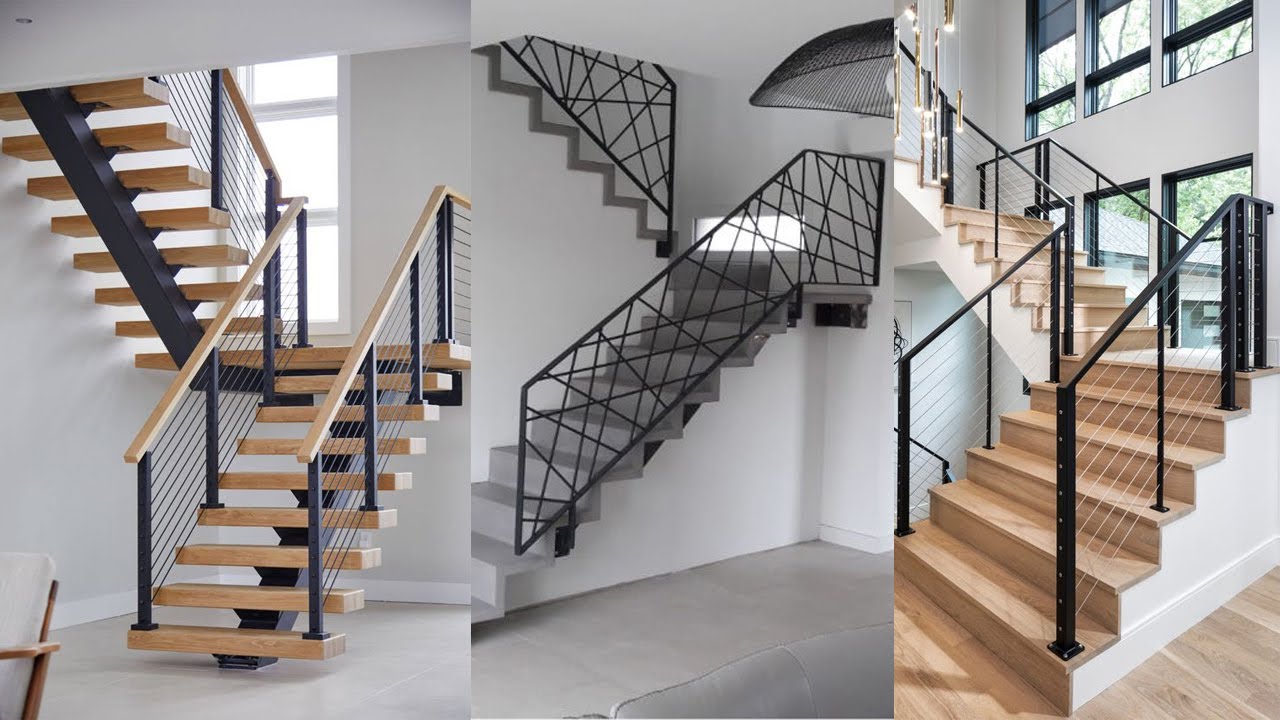
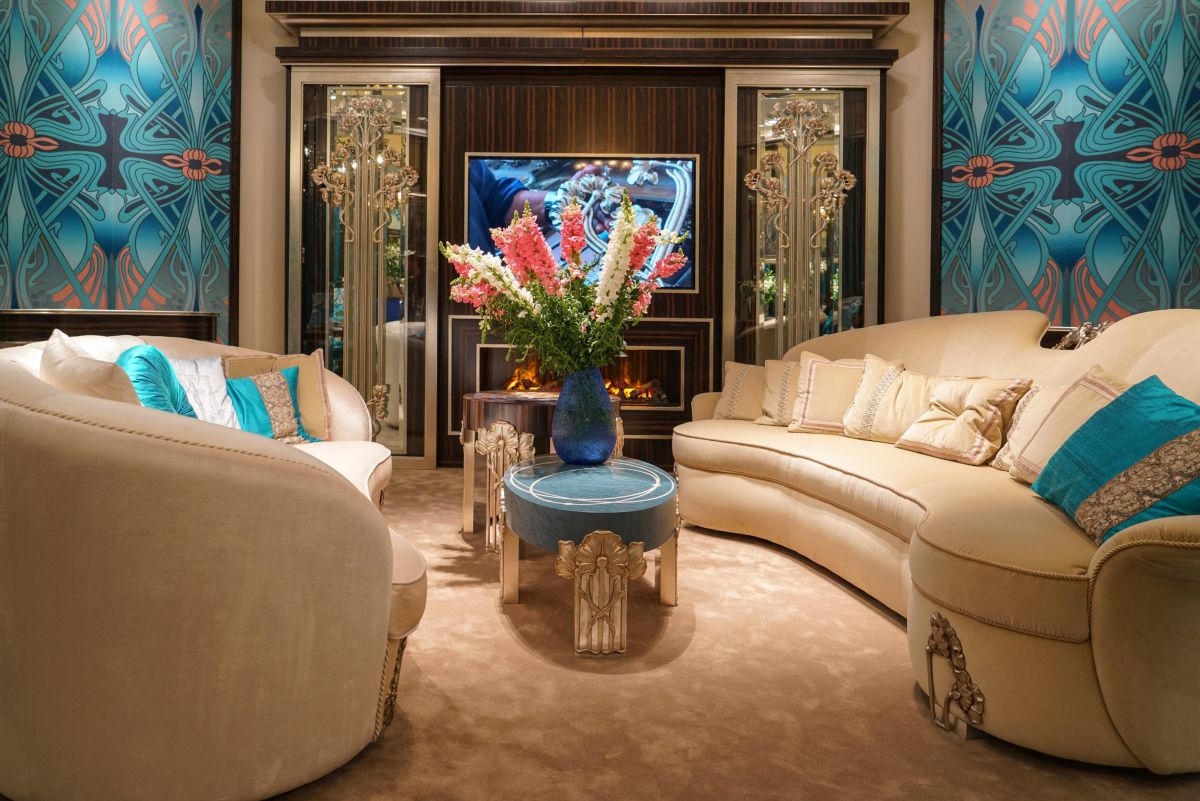
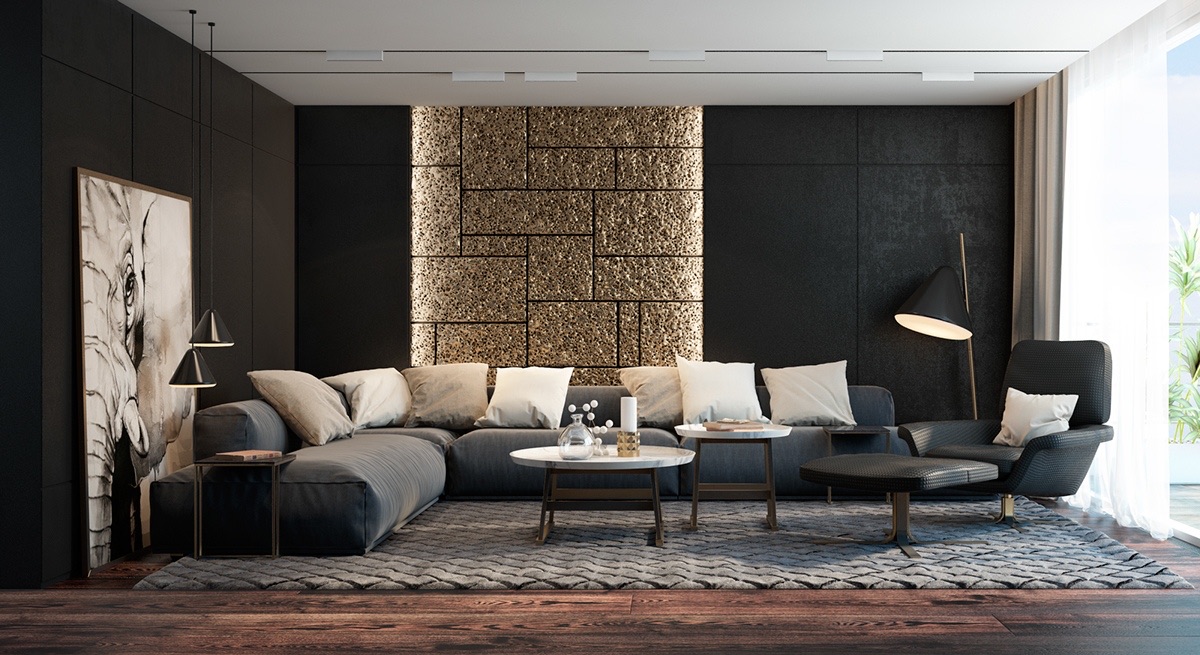
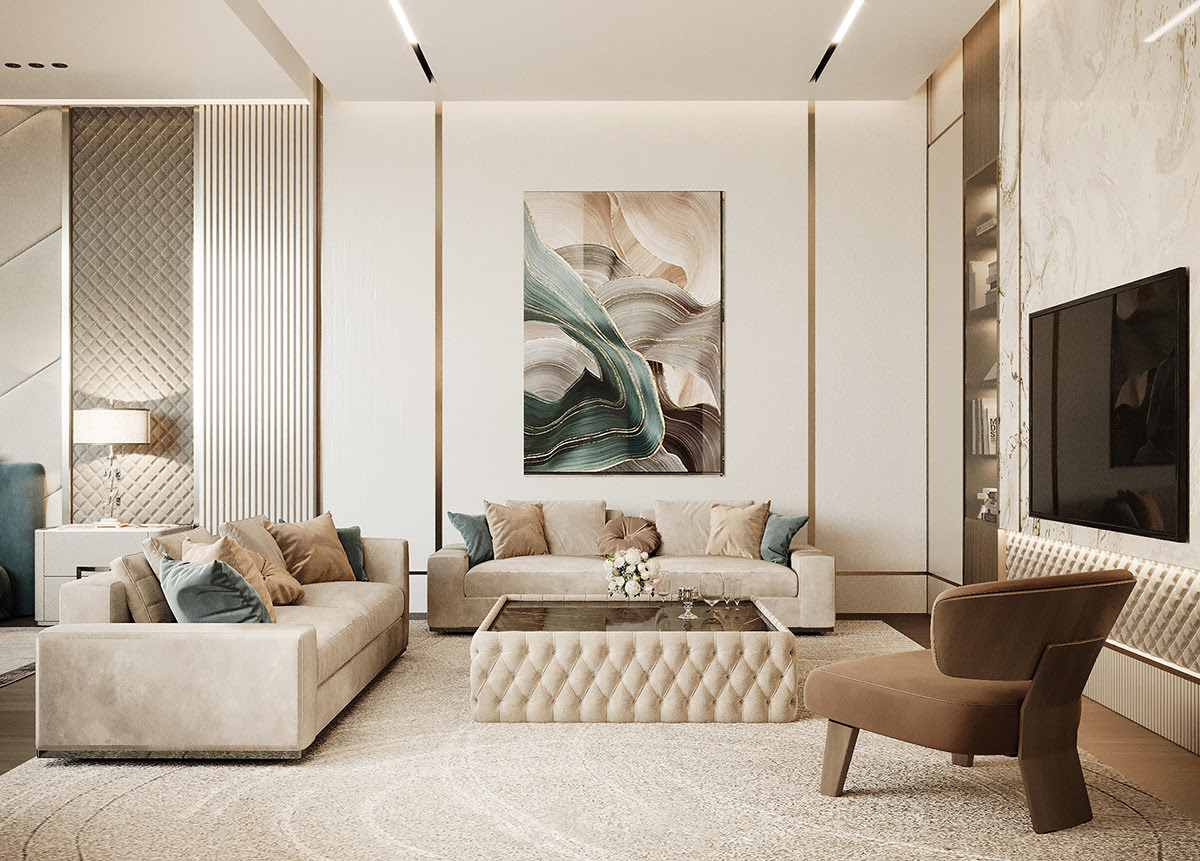
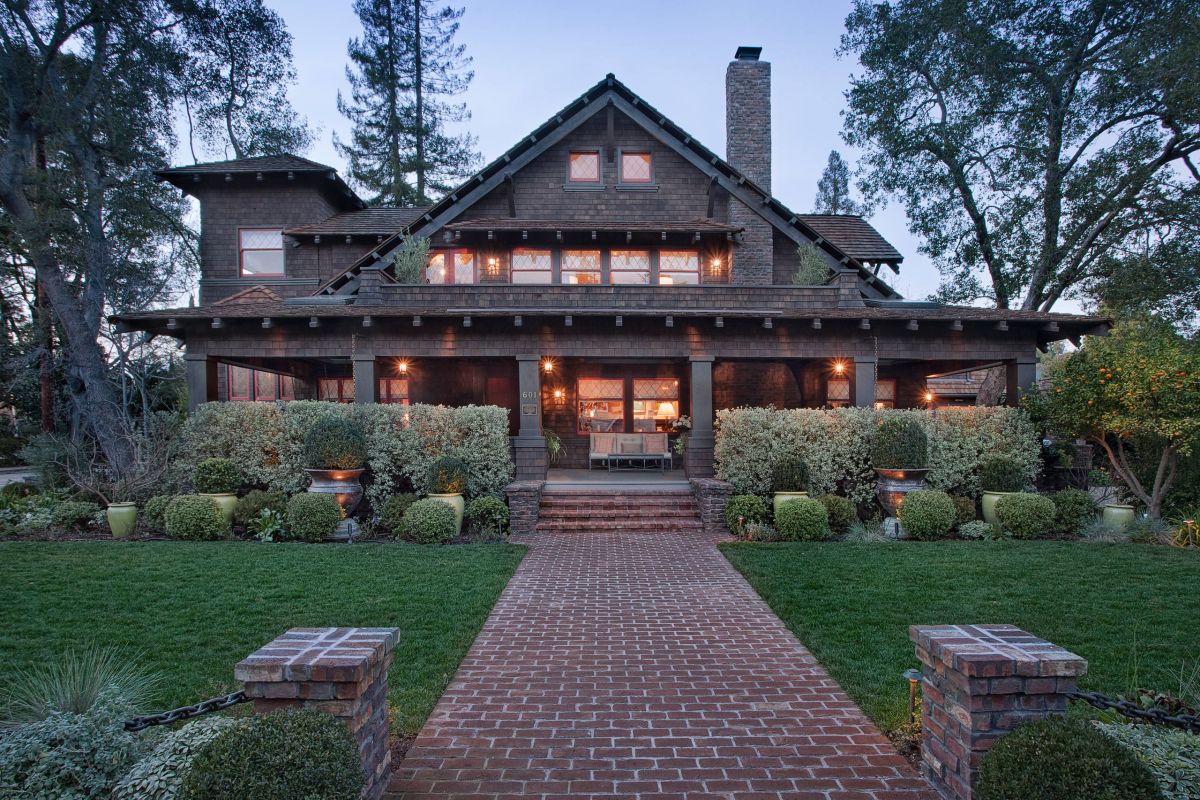
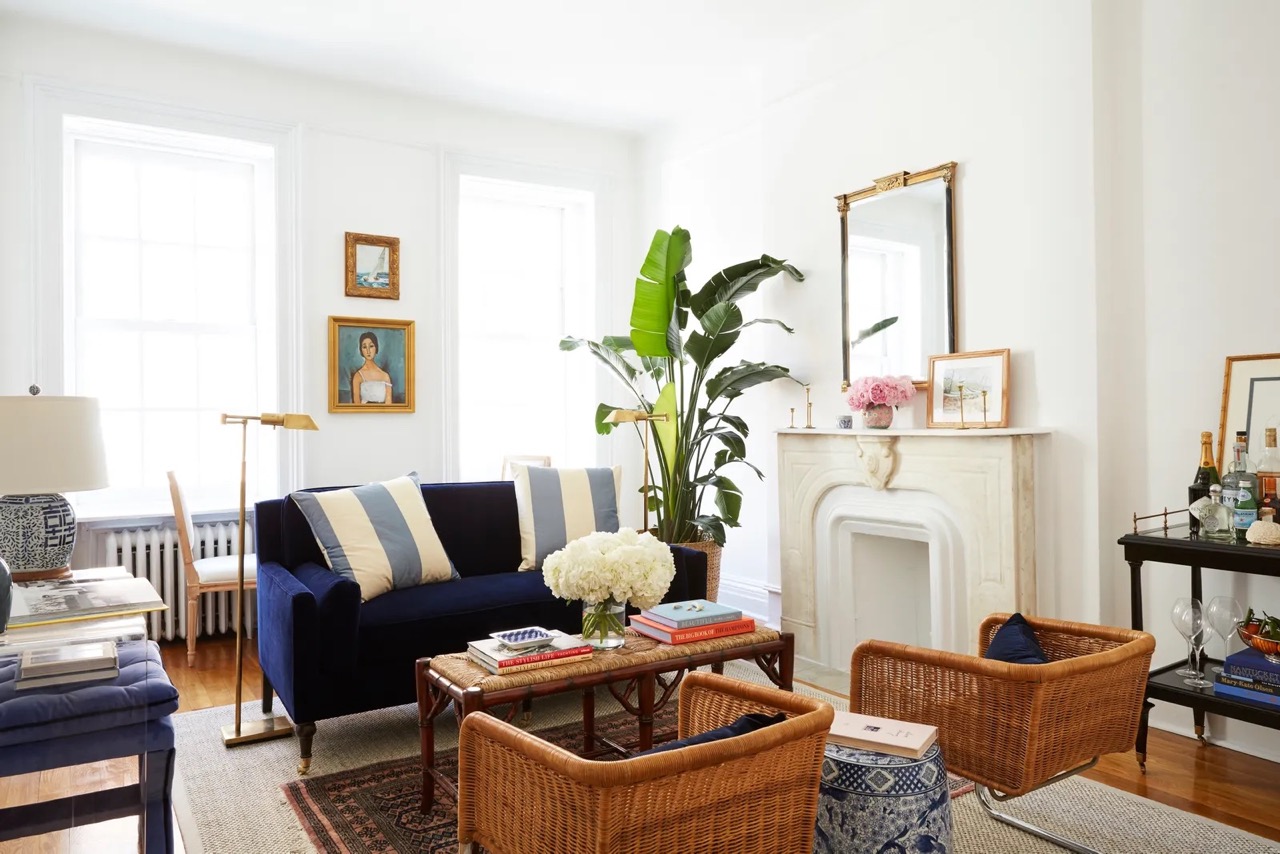
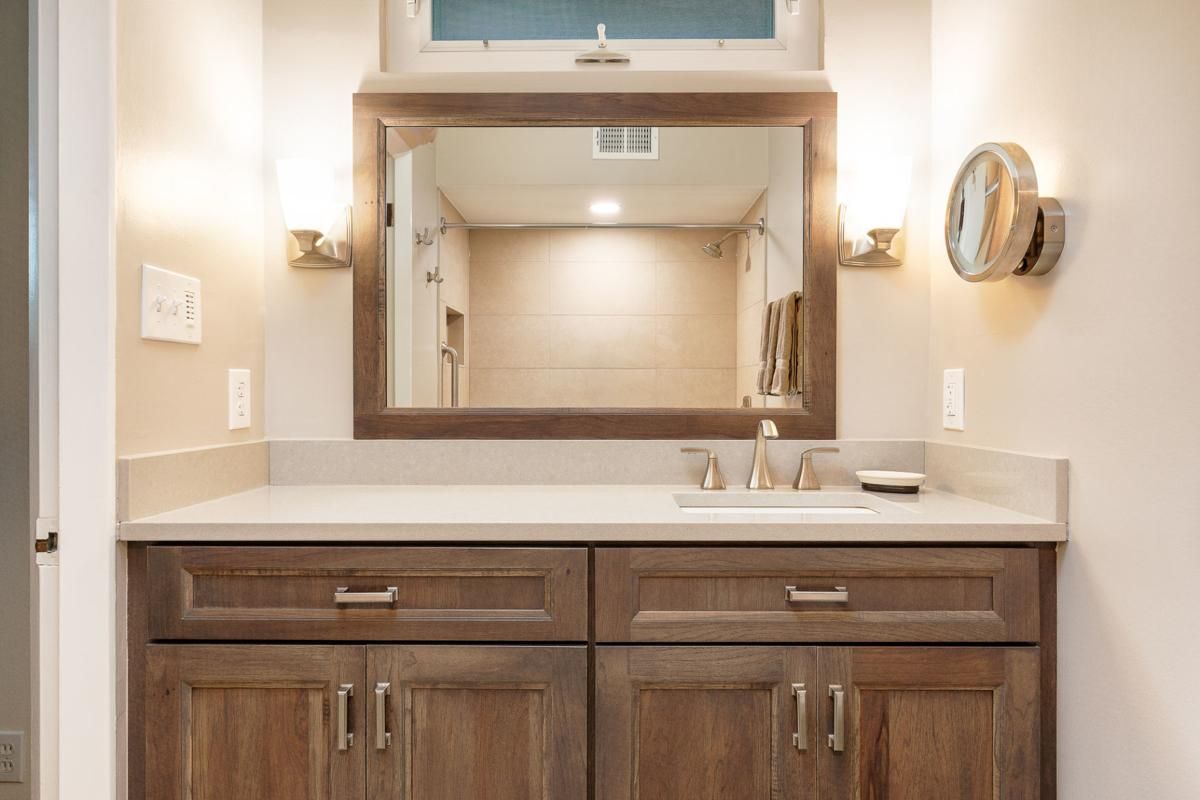
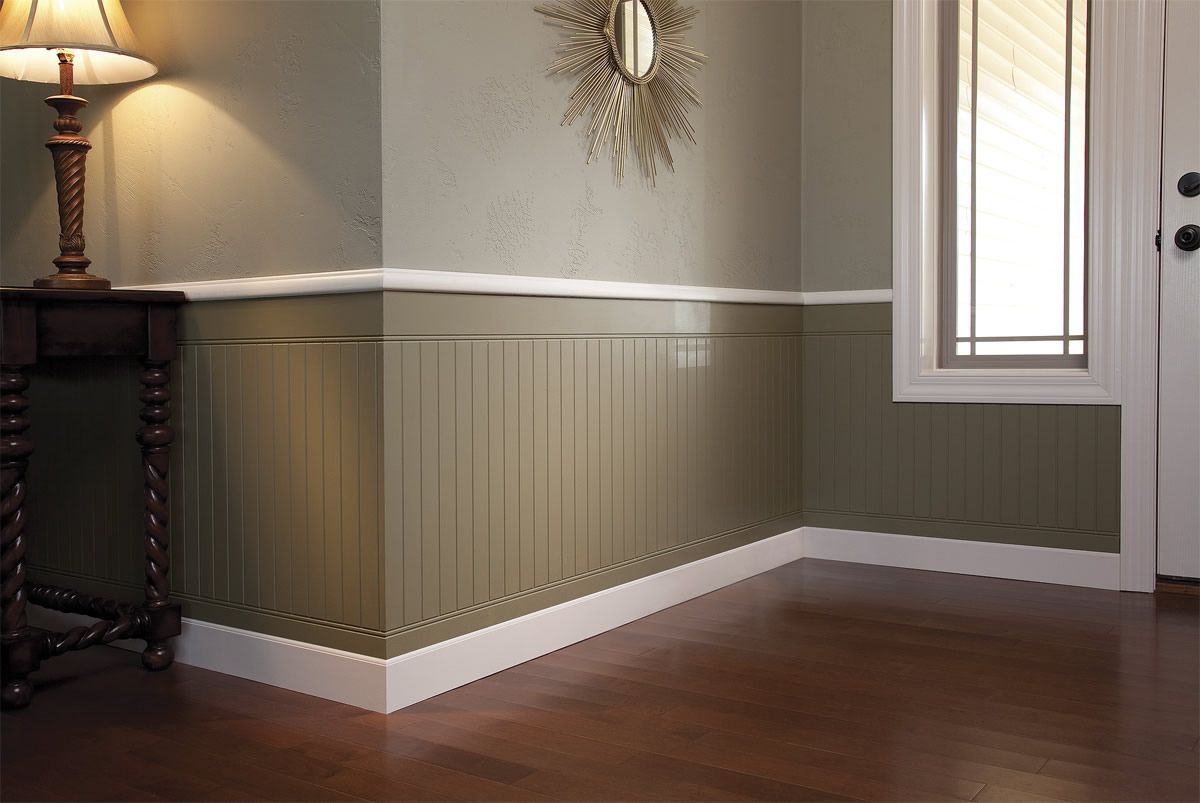
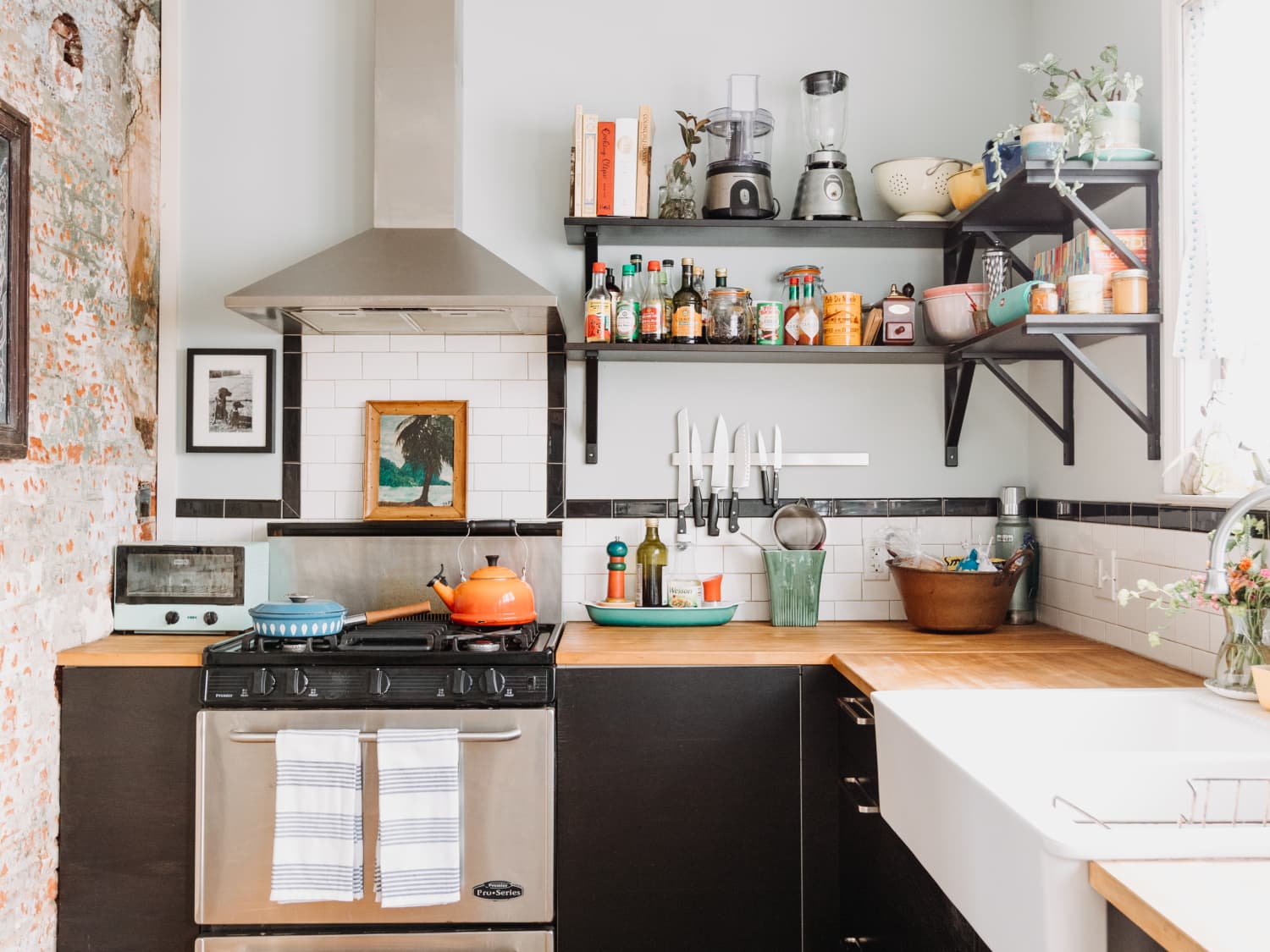
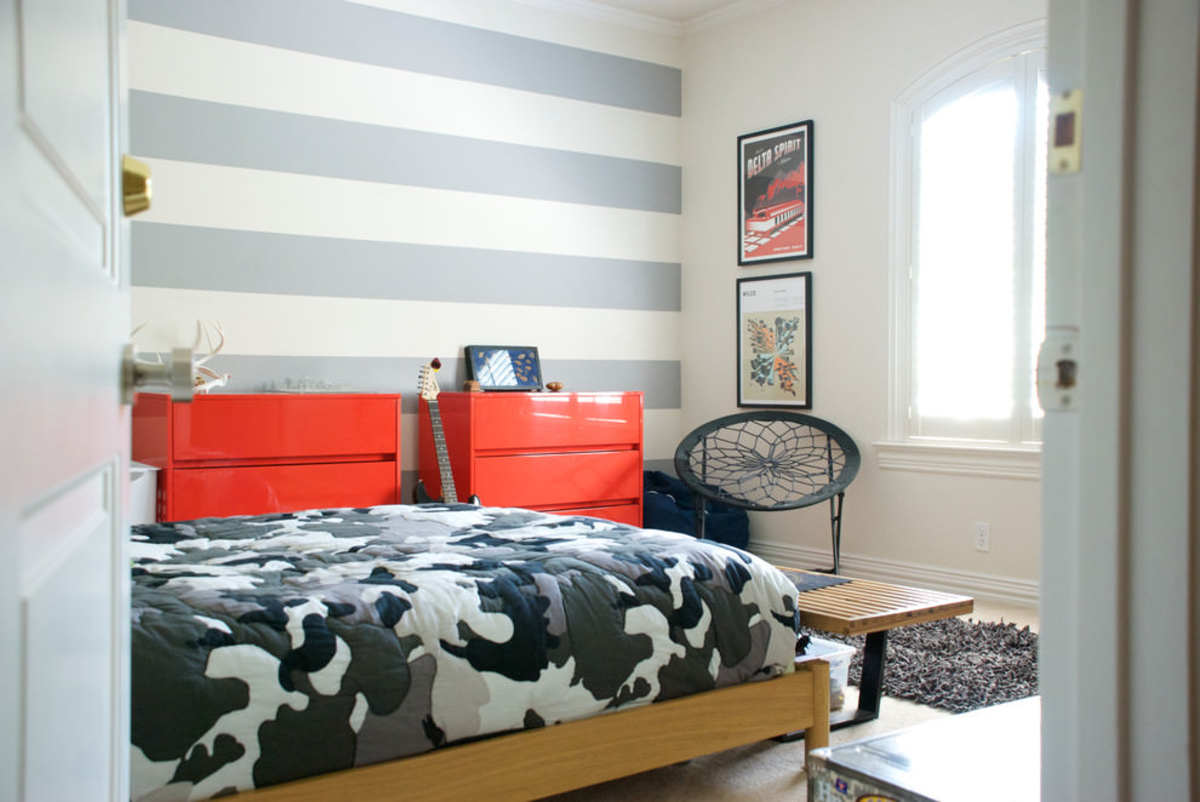

0 thoughts on “Decorative Room Ideas: 20 Design Rules For A Dream Home”